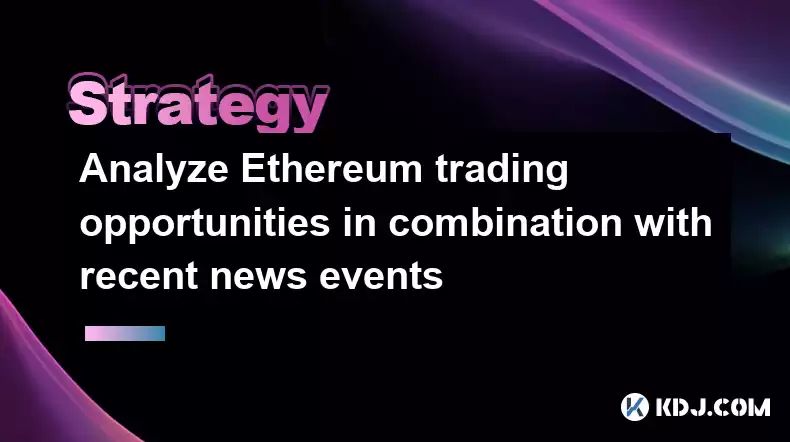-
 Bitcoin
Bitcoin $118400
1.64% -
 Ethereum
Ethereum $4210
-1.74% -
 XRP
XRP $3.175
-2.25% -
 Tether USDt
Tether USDt $1.000
0.00% -
 BNB
BNB $800.7
-0.18% -
 Solana
Solana $183.2
1.19% -
 USDC
USDC $0.9998
0.00% -
 Dogecoin
Dogecoin $0.2319
-4.30% -
 TRON
TRON $0.3388
1.11% -
 Cardano
Cardano $0.7951
-1.77% -
 Hyperliquid
Hyperliquid $44.76
1.61% -
 Chainlink
Chainlink $21.93
2.82% -
 Stellar
Stellar $0.4409
-1.92% -
 Sui
Sui $3.828
-2.37% -
 Bitcoin Cash
Bitcoin Cash $568.3
-0.57% -
 Hedera
Hedera $0.2561
-2.80% -
 Ethena USDe
Ethena USDe $1.001
-0.02% -
 Avalanche
Avalanche $23.63
-3.68% -
 Litecoin
Litecoin $124.0
1.80% -
 Toncoin
Toncoin $3.317
-2.74% -
 UNUS SED LEO
UNUS SED LEO $9.029
0.34% -
 Shiba Inu
Shiba Inu $0.00001349
-2.54% -
 Uniswap
Uniswap $10.85
-1.44% -
 Polkadot
Polkadot $4.025
-2.41% -
 Dai
Dai $1.000
0.01% -
 Cronos
Cronos $0.1619
2.41% -
 Ethena
Ethena $0.7756
4.12% -
 Bitget Token
Bitget Token $4.437
-1.70% -
 Pepe
Pepe $0.00001194
-3.82% -
 Monero
Monero $267.3
-2.17%
Analyze Ethereum trading opportunities in combination with recent news events
Understanding the impact of news events, utilizing technical analysis, managing risk, and conducting fundamental analysis are crucial for effective Ethereum trading and investment.
Feb 25, 2025 at 05:30 am

Key Takeaways:
- Understand the impact of recent news events on Ethereum's price and market sentiment.
- Identify trading opportunities based on technical analysis and market trends.
- Risk management strategies to minimize potential losses.
- Fundamental analysis to assess Ethereum's long-term potential.
Analyzing News Impacts on Ethereum:
- Ethereum 2.0 Release Update: The upgrade's progress can influence Ethereum's price due to anticipation of increased scalability and reduced gas fees.
- SEC Investigation of Ethereum: Rumors or news of regulatory actions could affect demand, leading to volatility.
- Stablecoin Developments: Announcements and updates from major stablecoins, such as USDT and USDC, can impact Ethereum's liquidity and demand.
- DeFi Market Dynamics: The growth and activity of decentralized finance (DeFi) applications built on Ethereum directly affects its utilization and value.
- Institutional Adoption: News of institutional investors adopting or incorporating Ethereum can enhance credibility and drive demand.
Identifying Trading Opportunities:
- Technical Analysis: Study Ethereum's price charts to identify support and resistance levels, trend lines, and candlestick patterns to determine trading entries and exits.
- Market Sentiment: Gauge investor sentiment through sentiment indicators, social media, and news sources to understand market bias and potential reversals.
- Trend Following: Identify major uptrends or downtrends and trade accordingly, capitalizing on momentum and established market direction.
- Range Trading: Define price ranges based on support and resistance levels and enter/exit trades at the boundaries to capitalize on sideways movement.
- Breakout Trading: Monitor for price breakouts above resistance or below support levels to identify potential new trends and trading opportunities.
Risk Management Strategies:
- Stop-Loss Orders: Place stop-loss orders below support levels or above resistance levels to protect against adverse price movements.
- Position Sizing: Calculate an appropriate trading position size based on risk appetite, account balance, and market volatility.
- Risk-Reward Ratio: Ensure a positive risk-reward ratio for each trade by setting a profit target relative to the potential loss.
- Hedging: Offset potential losses by employing hedging strategies, such as long positions in different cryptocurrencies or short positions in inverse ETFs.
- Diversification: Spread trading capital across multiple crypto assets to mitigate the impact of price fluctuations in any one asset.
Fundamental Analysis for Long-Term Potential:
- Platform Maturity: Assess Ethereum's technological advancements, network stability, and developer ecosystem to evaluate its long-term competitiveness.
- Ecosystem Growth: Analyze the development and adoption of dApps, smart contracts, and DeFi projects within Ethereum's ecosystem.
- Community Support: Gauge the size and engagement of Ethereum's developer and user community to assess the project's longevity.
- Competition Analysis: Compare Ethereum's features, capabilities, and market share with other smart contract platforms to determine its competitive advantage.
- Network Metrics: Monitor Ethereum's gas fees, block times, and transaction volume to evaluate network usage and efficiency.
FAQs:
Q: How does the Merge affect Ethereum's price?
A: The Merge, Ethereum's transition to a Proof of Stake consensus mechanism, can potentially increase Ethereum's price due to reduced energy consumption, increased transaction speed, and reduced inflationary supply.
Q: What is Ethereum's forecast for 2023?
A: Ethereum's forecast for 2023 is subject to market conditions and news events, but analysts predict a range of $1,500-$3,000 based on technical analysis and fundamental factors.
Q: Is Ethereum a good investment in 2023?
A: Ethereum's investment potential in 2023 depends on individual risk tolerance and investment goals. It offers long-term growth potential due to its platform maturity, ecosystem growth, and ongoing developments.
Disclaimer:info@kdj.com
The information provided is not trading advice. kdj.com does not assume any responsibility for any investments made based on the information provided in this article. Cryptocurrencies are highly volatile and it is highly recommended that you invest with caution after thorough research!
If you believe that the content used on this website infringes your copyright, please contact us immediately (info@kdj.com) and we will delete it promptly.
- LYNO AI & XRP: Decoding the ROI Potential in a Shifting Crypto Landscape
- 2025-08-11 04:30:11
- Cryptos on the Cusp: Cold Wallet, Price Breakouts, and What's Hot Now
- 2025-08-11 04:50:11
- Dogecoin, Meme Coins, and Remittix Utility: What's the Hype?
- 2025-08-11 04:50:11
- Sky Bet, ESPN, and the Spartans Bonus: A Betting Landscape Overview
- 2025-08-11 05:11:16
- Altcoin Buyouts & Market Removals: Crypto Development's Wild Ride
- 2025-08-11 04:30:11
- Bitcoin Banks Arrive: El Salvador's Bold Play with Investment Banks and Crypto
- 2025-08-11 04:55:12
Related knowledge

How to use stop-loss orders to limit potential losses?
Aug 08,2025 at 02:01pm
Understanding Stop-Loss Orders in Cryptocurrency TradingA stop-loss order is a risk management tool used by traders to automatically sell a cryptocurr...

What are the most promising altcoins to invest in?
Aug 10,2025 at 11:42am
Understanding the Role of Private Keys in Cryptocurrency WalletsIn the world of cryptocurrency, private keys are the cornerstone of ownership and cont...

How to read cryptocurrency charts and use technical analysis?
Aug 08,2025 at 11:08am
Understanding the Basics of Cryptocurrency ChartsCryptocurrency charts are graphical representations of price movements over time. These charts are es...

What is the difference between long-term holding (HODLing) and short-term trading?
Aug 10,2025 at 05:30pm
Understanding HODLing in the Cryptocurrency SpaceThe term HODL originated from a typo in a 2013 Bitcoin forum post and has since become a widely accep...

How to do your own research (DYOR) before investing in a crypto project?
Aug 08,2025 at 09:07pm
Understanding the Core Principles of DYOR in CryptocurrencyEngaging in due diligence before investing in any cryptocurrency project is essential to mi...

How to build a diversified crypto portfolio?
Aug 09,2025 at 12:21pm
Understanding the Importance of Diversification in CryptoDiversification in the cryptocurrency space is a strategy used to reduce risk by spreading in...

How to use stop-loss orders to limit potential losses?
Aug 08,2025 at 02:01pm
Understanding Stop-Loss Orders in Cryptocurrency TradingA stop-loss order is a risk management tool used by traders to automatically sell a cryptocurr...

What are the most promising altcoins to invest in?
Aug 10,2025 at 11:42am
Understanding the Role of Private Keys in Cryptocurrency WalletsIn the world of cryptocurrency, private keys are the cornerstone of ownership and cont...

How to read cryptocurrency charts and use technical analysis?
Aug 08,2025 at 11:08am
Understanding the Basics of Cryptocurrency ChartsCryptocurrency charts are graphical representations of price movements over time. These charts are es...

What is the difference between long-term holding (HODLing) and short-term trading?
Aug 10,2025 at 05:30pm
Understanding HODLing in the Cryptocurrency SpaceThe term HODL originated from a typo in a 2013 Bitcoin forum post and has since become a widely accep...

How to do your own research (DYOR) before investing in a crypto project?
Aug 08,2025 at 09:07pm
Understanding the Core Principles of DYOR in CryptocurrencyEngaging in due diligence before investing in any cryptocurrency project is essential to mi...

How to build a diversified crypto portfolio?
Aug 09,2025 at 12:21pm
Understanding the Importance of Diversification in CryptoDiversification in the cryptocurrency space is a strategy used to reduce risk by spreading in...
See all articles

























































































